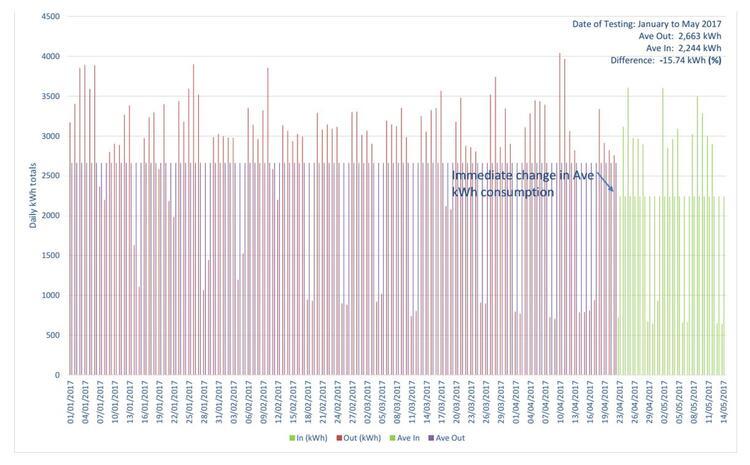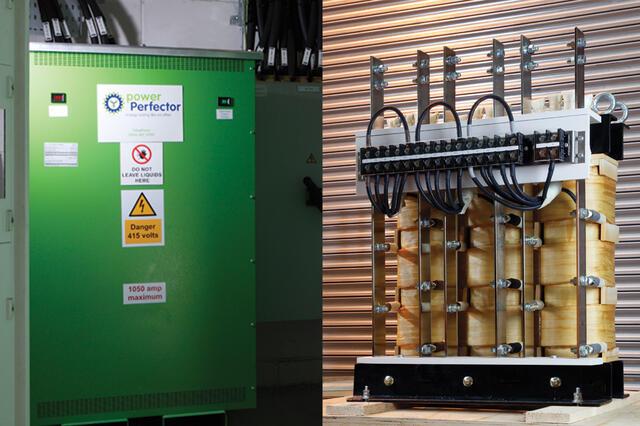Voltage Power Optimisation – A Simple Way to Cut Energy Costs
28 June 2019Voltage Power Optimisation – A Simple Way to Cut Energy Costs
28 June 2019To cut energy costs, reduce CO2 emissions and improve power quality for occupiers, the Schroder UK Real Estate Fund has installed voltage power optimisation technology in three of its multi-let office buildings. This equipment regulates and conditions the voltage on the main incoming electricity supply, eliminating excess voltage, triple harmonics and spikes. For many commercial buildings, it offers a simple way to reduce energy consumption across all electrical equipment and appliances. Informed by the results of the initial rollout, the Fund is now exploring opportunities in some of its other assets.
Key Facts
- £45,700 annual energy cost savings
- 273 tonnes less CO2 annually
- Longer equipment lifespans
- Payback across three sites of 2.4 years
- Lower maintenance costs
Situation
In 2017, the Schroder UK Real Estate Fund asked Knight Frank to explore the energy saving opportunities in the buildings managed by them on the Fund’s behalf. Sustainability is an integral element of Schroders’ investment process. Knight Frank is property manager to the buildings and is supported by its dedicated Energy and Sustainability Team.
Alongside wider energy reduction activities, Knight Frank worked with consultant partner Intelligent Energy Saving Company to assess the potential of voltage power optimisation in several buildings.
Voltage power optimisation can work because electricity from the National Grid is generally supplied at a higher voltage than necessary. This is largely due to old distribution networks designed to operate at higher voltage levels, which wastes energy and shortens equipment lifespans through overheating or vibrations caused by excess voltage and voltage spikes. In addition, Grid power quality now experiences greater levels of fluctuation due to increasingly diverse renewable power feeds affecting voltage volatility, transients and harmonics within the network. Voltage power optimisation helps homogenise this variable power output.
Actions
Knight Frank looked at voltage power optimisation solutions from three providers. They opted for powerPerfector because:
- The technology has no moving parts, which means there is nothing to break down. It is a ‘fit and forget’ technology. Once the optimisation level is set, the only maintenance requirement is electrical testing every five years.
- The installation process is very robust, mitigating the risks associated with installing any technology on the incoming supply. These include health and safety, and secure power supply, essential for occupiers.
- Strong predicted savings are backed by performance in thousands of installations and case studies.
Power optimisation units were installed at:
- 4 Chiswell Street: powerPerfector PLUS 280kVA / 400Amp, installed in May 2017.
- Davidson House: powerPerfector 830kVA / 1200Amp on landlord supply and 350kVA / 500Amp in occupier areas, installed in April 2017.
- Palace House: powerPerfector PLUS 280kVA / 400Amp, installed in April 2017.
To assess the performance of the voltage power optimisation units at each site, half-hourly electricity consumption (kWh) data for the main incoming supply was reviewed both pre- and post-installation, using the IPMVP methodology:
- Pre-installation: to establish a benchmark level of average consumption, typically 3-4 months’ consumption.
- Post-installation: to isolate the savings attributable to voltage power optimisation, typically for around 50 days. The further away from the installation date, the less useful the data becomes due to factors such as additions of load and seasonal changes. The contractor reported the savings results, which Knight Frank analysed.
Informed by performance in these buildings, Knight Frank is now exploring the potential of voltage power optimisation in additional buildings for Schroder and other clients. This is part of Knight Frank’s wider efficiency programme, including LED lighting replacements.
Financials
Across the three buildings:
- £109,560 capital investment.
- £45,700 annual cost savings.
- Payback 2.4 years.
Investment was funded through occupier service charges, with subsequent savings reducing service charges.
Benefits
Across the first three buildings:
- 9%-15% typical electricity reductions.
- 273 tonnes annual CO2 savings.
Additional benefits include:
- Longer equipment lifespans. For instance, a 230V lamp run at 240V fails after 550 hours instead of 1,000.
- Lower maintenance costs, as equipment needs replacing less often.
- Enhanced power quality through conditioning, including harmonic suppression, improved three-phase balancing and common transient protection.
- Greater growth potential, by releasing capacity on the incoming supply and circuit breakers.
- Reduced power supply risks, with more stable voltage as the Grid moves to more diverse power supplies.

Example performance graph (installation date 22 April 2017)
The graph below shows energy consumption pre-install in red and post-install in green. It also maps the average consumption pre- and post-install, providing a visual of the energy savings.

Challenges and Achievements
CHAMPIONS
How to get energy saving technology projects off the ground?
A senior level champion will help energy efficiency projects get off the ground and ensure that people work together to overcome any issues. Given the complexity of systems and how every building is unique, there are often hitches on technology projects in buildings. A common issue with voltage power optimisation projects is a lack of space in the switch room for the optimisation unit. This can be overcome with cabling linked to an alternative location, and costs for this need to be factored in at the outset. Knight Frank championed voltage power optimisation and secured buy-in from the Fund’s investment managers, as part of the wider programme to meet energy saving targets for the portfolio. At a property level, the Facilities Manager (FM) welcomed the potential of the technology to deliver energy savings and reduce maintenance costs. They supported surveys in each building.
ENGAGEMENT
How to bring occupiers on board?
A feasibility study was conducted for each building, analysing the potential savings, costs and returns. Each site was surveyed, looking at voltage levels across the site, load, size of units, placement and potential savings from the electrical equipment on site. The projects were signed off for inclusion within the appropriate service charge budgets and discussed with occupiers. Occupiers particularly welcomed how the technology improves efficiency across the entire electrical infrastructure of the building, in both common parts and occupier areas, because it acts at the point where the main supply enters the building. As a result, occupiers paying for their bills separately still benefit as their supply is also improved.
ENGINEERING
How to mitigate engineering risks?
At the start of the project, the contractor’s engineers survey the site, accompanied by the FM team, assessing the switch room, testing the voltage, confirming that the voltage can be optimised and identifying the unit capacity required, along with any cabling. The contractor then builds the unit and the FM team liaises with occupiers to agree the shutdown date, which typically takes place overnight at weekends. Once the unit is delivered, it is placed in situ and any additional preparatory work is completed. Once the building is shut down, it usually takes 3-4 hours to connect and test the unit, before bringing the building back online in stages to avoid overload. The contractor and FM team then stays on site for another 2-3 hours to check that all the building’s equipment is functioning correctly. For instance, often when voltages change, lifts need to be recalibrated for 220 volts instead of 240 volts, to ensure that they stop flush with each floor. Contractors have a full list of equipment that requires checking before and after installation to ensure that occupiers return to a fully functioning building.
* Post-installation period limited to 22 days due to an unrelated increase in load.
** Post-installation period limited to 21 days due to a change in building occupancy, which reduced energy use.
*Please note that the information on this page was supplied by the BBP Member and the BBP assumes no responsibility or liability for any errors or omissions in the content


